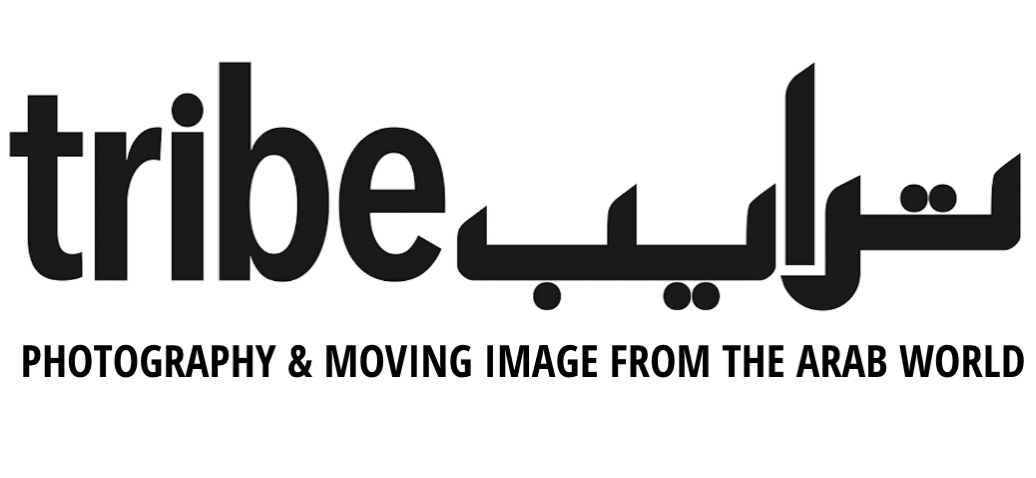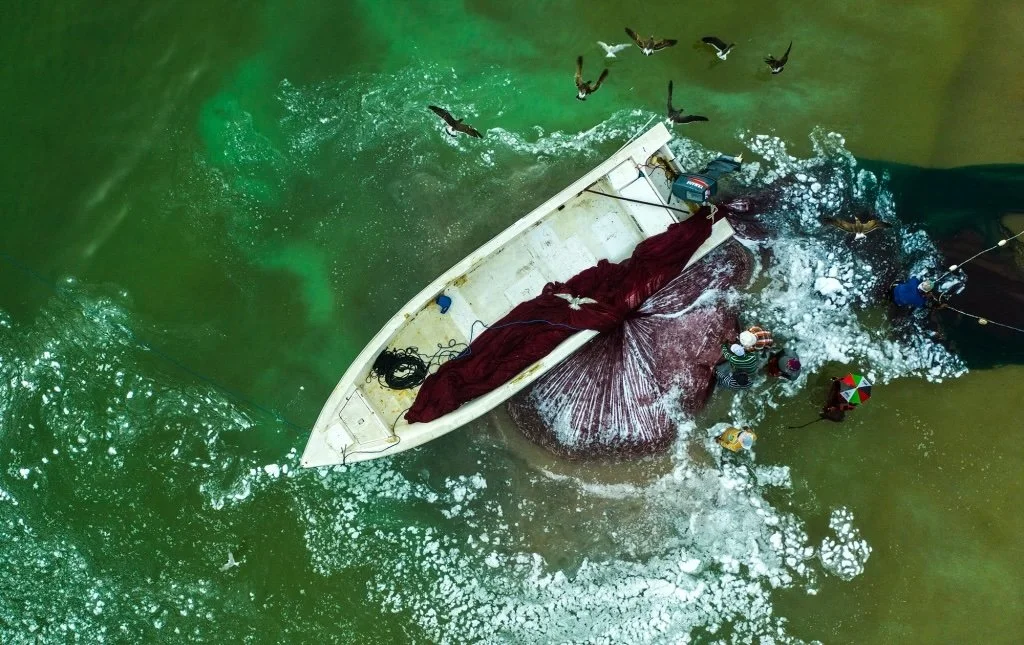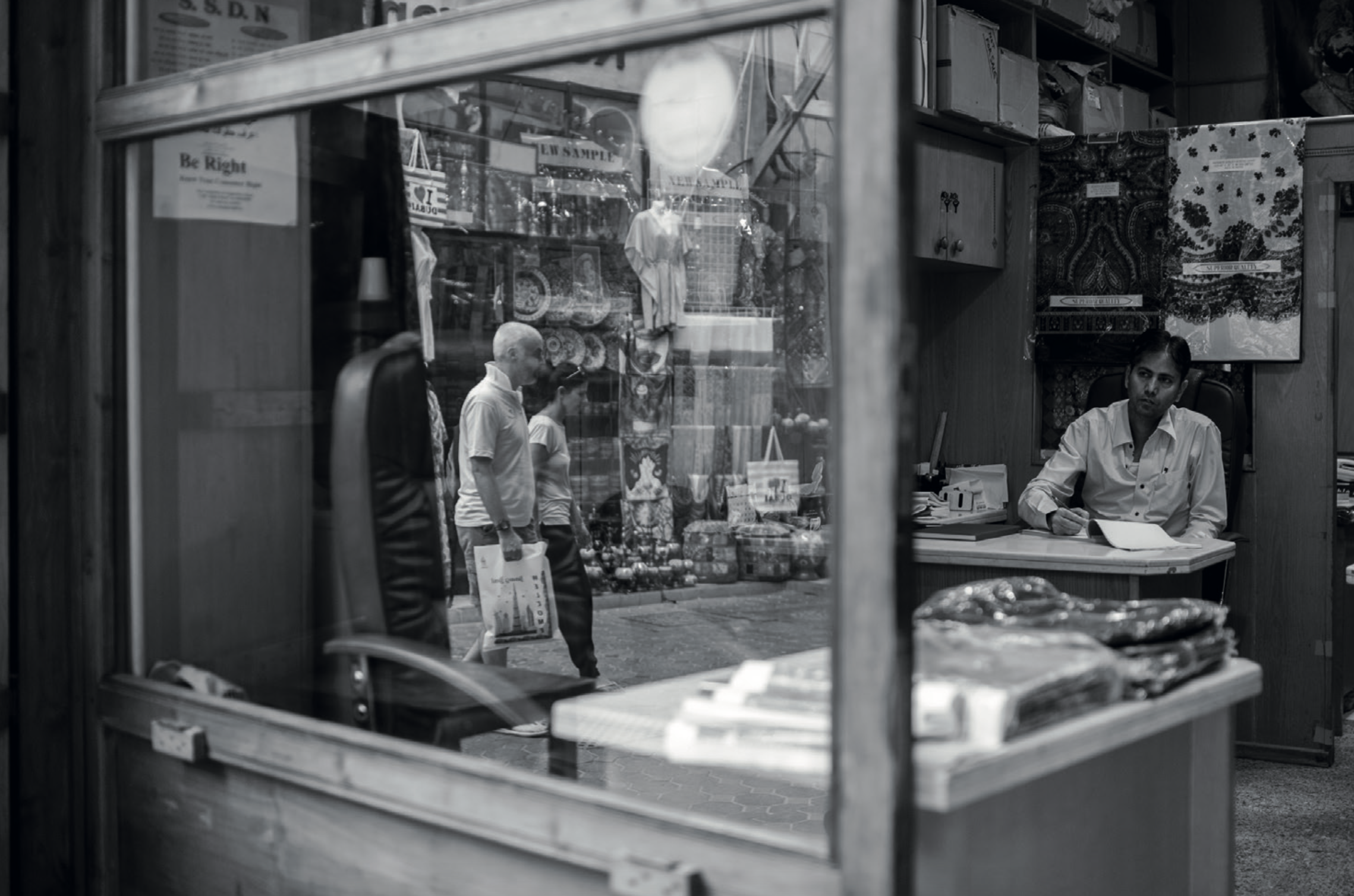From End to End: Group exhibition, Tashkeel Ned Al Sheba, Dubai
Ola Allouz, Untitled (2017), Archival pigment print, 47 x 70 cm.
Text is made of excerpts from the curatorial essay ‘From End to End’, is a group photography exhibition curated by Tashkeel’s Founder and Director, Lateefa bint Maktoum, and Jassim Al Awadhi, Founder and Chairman of Akkas, the UAE Photography Club and Chairman of the Emirates Photography Association.
The exhibition features a series of thought- provoking images that demonstrate the ever-evolving process of art and creation by six Emirati photographers:
Ola Allouz,Yagoub Al Hammadi, Mousa Al Raeesi, Faisal Al Rais,Mona Al Tamimi, and Maiha Bughanoum.
“ As a curator I have learned to look at the space between artworks – how one speaks to the other in the context of existing side by side in a white box while projecting ideas about the world around us. Personally, when I curate a show, I like to create conversations between pieces showing a larger context of multiple ideas, which leaves the viewer with either questions or answers. This experience is only gained by immersing oneself and visually reading the conversations.
This exhibition came about after multiple conversations over the years with my colleague Jassim Al Awadhi. We constantly discussed the importanceof photography as a documentation tool of current contemporary culture, changes in landscapes and natural habitats as well as the human interaction with it. Through this exhibition, we wanted to highlight photographers who are rooted in capturing life as it is without the manipulation of it: The photographers whom people will look back on years later to understand how life was lived during the times we know now.”
“Through the lens of Ola Allouz, we take an in depth look at the literal layers it takes to put on iftars in public spaces across Dubai. The more we look at details of her work, the more we understand. An important question of Allouz’s work (that links us to other works in the exhibition) is the existence of plastic across the photographs. If a viewer deducts that this ritual happens daily for 30 days a year, how much plastic is wasted as a temporary food carpet for people to sit on while they eat for an hour or less? Is there a sustainable solution out there that can be used instead of the plastic? Using the age-old rule; reduce, reuse and recycle.
Mona Al Tamimi, Independant (2019), Archival pigment print, 47 x 70 cm.
These images guide us straight to Mona Al Tamimi’s images who show us women in Zanzibar working on the shoreline with the fishermen to bring in the fish, process and dry them. When we look closer, we realise that they cover their entire bodies with reused bags of thick woven plastic. Through scientific research, we know that in the long term these bags will release microplastics into the ocean, killing marine life. Although they use it as a type of body protection so as not to get hurt, they also use it to preserve their modesty of the female form (as when these women enter and exit the water, their clothes do not cling to their bodies), especially as they work closely with the fishermen who bring them the fish to process.
Mousa Al Raeesi, Livelihood (2019), Archival pigment print, 75 x 119 cm.
From one ocean to the next, Maitha Bughanoum and Mousa AlRaeesi – photographers who have used drones in their exhibited works – both show us the purity of the ocean with a mangrove shoreline. What we look at first seems untouched nature but then we begin seeing traces of human interaction with the space and place. The ocean is important because as we can see from Al Raeesi’s images the fishermen use it to feed people; it is a lifeline and life source for them. Yet the works make us question the greater context of the world’s oceans, which are being polluted in so many ways. The photographs of the ocean are central and essential to this exhibition. They are a meeting point for the subjects of almost all the works in this exhibition; from the ocean as a network of maritime highways, to the constant pollution of plastic that kills marine life.
Maitha Bughanoum, Manmade (2021)
The ocean is a life source for both humans and animals yet it is abused by some and cared for by many. The ocean is essential for the survival of multiple species and we have to find more solutions to preserve its safety and purity The ocean then leads us to the sky through the images of Yagoub Al Hammadi, a practitioner who is in tune with nature and has the patience to wait for it to appear and to follow the journeys of multiple desert life forms like a true documentary photographer. For this exhibition, we chose to use his series depicting the lifecycle of an owl; from an egg to tagging, how they camouflage themselves as owlets to later taking their first flight as an adult owl. His images may seem like he is photographing a distant place far from Dubai yet as a city grows and less preservation of the desert takes place, the more humans encroach on these animals’ habitats. We see them now camouflaged and surviving but the question is, will we find them in the same place generations later? How will human development impact their habitat?
Yagoub Al Hammadi, Anticipation (2021)
We move out of the desert and become immersed in the black and white photography of Faisal A Rais who takes us on a reflective journey through the marketplace of the UAE, entering shop after shop, capturing layer upon layer of the hustle and bustle of a city, where life and manufacturing collide with mass groups of people in a market filled with sustainable and non- sustainable ways of packaging and selling.
Faisal Al Rais, Dimensions (2014)
One image stands out – a moment of pause – the reflection of a man in the middle of the road waiting to pass without colliding with passing cars. To me, I view this image as a dance every human being takes each time they step out of the house and every time they walk in a crowd. To each their own yet we are all responsible for one another.
- Co-curator, Sheika Lateefa Bint Maktoum
Faisal Al Rais, Dimensions (2015)
Faisal Al Rais, Dimensions (2018)
Faisal Al Rais, Dimensions (2018)
Faisal Al Rais, Dimensions (2014)
Maybe I was once an advocate. Maybe I was once a philosopher. Maybe I was all of these in a single day. Maybe, maybe, maybe. So many ‘maybes’. Yet I chose to be an artist who breathes the earth, the sea, the air, the flowers, the rocks, and even the animals. The end does not come with a beginning, rather it brings an end to an end, so that the beginning begins after all the endings.
What we witness beneath the roof of Tashkeel are stations between one end and another; the beginning of the formation of DNA to the beginning of the end of the ends, whereupon the light sees itself shining once again in the mirror of existence. In Physics, when a negative molecule is placed with another negative one, it becomes positive. This is how life is. After the accumulation of negatives, whether from oneself, from people who influence or from general surroundings, the journey of these negatives always ends in the generation of new and positive beginnings.
The images presented epitomise the relationship between each station. The participating artists present ideas that reflect both the depth of their abilities and the abundance of their commitment, which has enabled them to encapsulate a wisdom in each work. The art of renewal is the hope of reaching a goal, which is from end to end. The end stands confused at the end when the beginning begins. There is renewal at every end. When the end of the ends is reached, there is the beginning of eternity. We hope that these works will lead to the beginning of other works to come, God willing
- Co-curator, Jassim Al Awadhi











